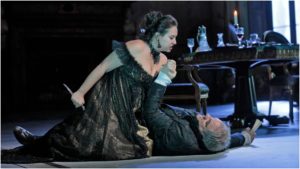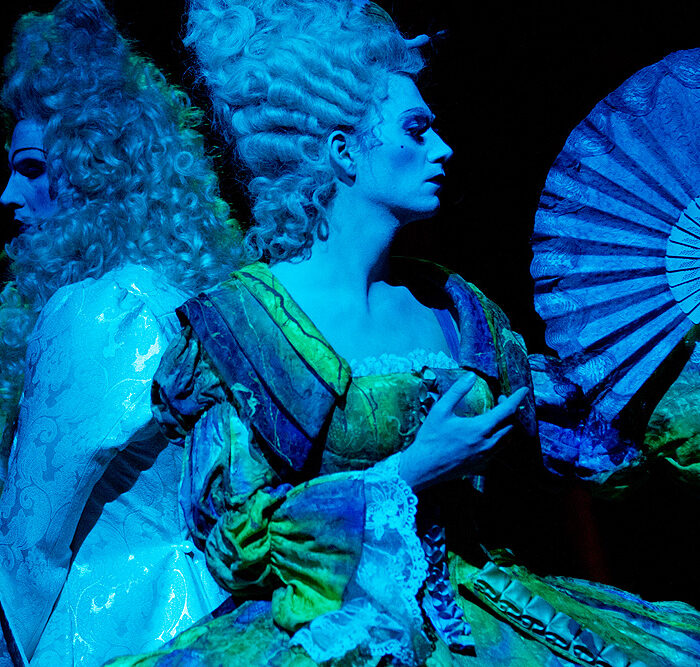
Opera Profile: Puccini’s Tosca
By Logan MartellFirst premiering on January 14, 1900 at Rome’s Teatro Costanzi, “Tosca” is one of opera’s most popular works. Adapted from Victorien Sardou’s play, “La Tosca,” by Giacomo Puccini and librettist Luigi Illica, the opera has seen countless productions worldwide since its premiere. Sardou himself expressed displeasure for his most cherished work being handled by a composer whom he did not particularly like, causing Puccini to depart from the project.
He would later return when composer Alberto Franchetti also stepped down from the project. Despite a tepid reception from critics of the time, “Tosca” has gone on to prove its worth, securing a place in history as a prominent member of the operatic canon.
Short Plot Summary
The opera begins as Angelotti, consul of the fallen Roman Republic, escapes from prison and finds refuge within the Church of Sant’Andrea della Valle. As he searches for provisions left behind by his sister, the Marchesa Attavanti, the approach of the church sacristan forces him to hide in the chapel. The sacristan is then joined by painter Mario Cavaradossi, who is working on a painting of Mary Magdalene, having been inspired by a blonde haired woman of great beauty who has been praying fervently at the church. When the sacristan leaves, Angelotti reveals himself to Cavaradossi, imploring his old friend to help him escape the pursuit of Baron Scarpia, Chief of Police. Cavaradossi gives Angelotti a basket of food and promises his assistance, hiding once again at the arrival of opera singer Floria Tosca. Tosca asks Cavaradossi who he has been conversing with, certain she has heard a woman’s footsteps and rustling dress. He assures her of his fidelity and the two sing of sharing a romantic evening that night at their villa. Tosca’s quelled jealousy is quickly reignited when she recognizes the woman Cavaradossi has been painting as the Marchesa Attavanti, but her suspicions are again soothed before Tosca departs. As Angelotti and Cavaradossi discuss their plan for the former to hide within a secret well in the painter’s villa, after having disguised himself with his sister’s clothes, they flee when the sound of a cannon announces the escape of Angelotti from prison. Baron Scarpia soon enters the church and begins investigating; his agents discover an empty basket of food, which the sacristan asserts was untouched by Cavaradossi, and a fan bearing the emblem of the Attavanti family. Scarpia uses the fan to prove to Tosca an alleged affair between Cavaradossi and the Marchesa Attavanti, causing the betrayed diva to run off in search of her lover. As Scarpia sends his men to follow Tosca to Cavaradossi, and thus Angelotti, he gloats in his plan to execute them and take Tosca for his own.
Later that evening, Scarpia summons Tosca to his apartment at the Palazzo Farnese. Having arrested Cavaradossi but failing to find Angelotti, Scarpia’s men torture the painter to reveal his location. When Tosca arrives, she is initially able to resist Scarpia’s interrogation before the cries of her lover become too much for her to bear; she reveals that Angelotti is hiding in the well at their villa and Scarpia’s men storm off to arrest him. His plot still not over, Scarpia informs Tosca that if she allows him to have his way with her, he will spare Cavaradossi from prison by staging a fake execution. Horrified and without options, Tosca submits on the condition that Scarpia sign a document promising her and Cavaradossi safe passage out of Rome. When the paper is signed, Scarpia approaches Tosca, only to be stabbed with a knife taken from his dinner table, taking the document before heading to where the execution will be staged.
In the upper level of Castel Sant’Angelo, Cavaradossi is granted a pen and paper to write a final letter to Tosca. As he reflects on his impending death, Tosca enters and shows him the document promising his freedom. She informs him that the coming firing squad will be shooting blanks, and so he must fall down as if dead. When the squad arrives and opens fire on Cavaradossi, Tosca excitedly waits for them to leave before calling for her lover to get up. When he does not rise, she discovers that Cavaradossi is indeed dead, Scarpia having betrayed his promise to her. When Scarpia’s men arrive to arrest Tosca for killing their chief, they find her weeping over her lover’s body, before she leaps from the roof, and to her death.
Famous Musical Numbers
The first aria, “Recondita Armonia,” opens the opera with Cavaradossi relishing in the beauty of his lover Tosca; though he may paint other women his heart indeed belongs to her, as evidenced by the exultation he gives her in the form of a soaring B-flat found between the first and second syllables of her name.
Act one closes with Scarpia affirming his plans in the aria “Te Deum,” while the congregation of church sing praises to God. Though the directions written have Scarpia crossing himself and kneeling before the procession led by the bishop, he is captivated by his lustful fantasies made explicit in the line “Tosca, mi fai dimenticare Iddio!” meaning “Tosca, you make me forget God!” Scarpia rejoins the chorus for the closing lines of the Te Deum prayer, thus cloaking his foul intentions within the piety of the community.
As the drama of Act II reaches a fevered peak, Tosca’s aria “Vissi d’arte” is a reflection on the life she has devoted to art to compassion for her fellow man. Attributing her talent to her faith in God, she cries out with a pleading B-flat, mirroring the one delivered by Cavaradossi in “Recondita Armonia,” on the second syllable of “Signor.” Her line “perche Signor, ah, perche me ne rimuneri cosi?” translated as “Why, Lord, ah, why do you reward me thus?” enforces the brutality of Scarpia which her innocence is left to defend against.
Watch and Listen
Here is a filmed version of the opera starring Raina Kabaivanska, Plácido Domingo, and Sherrill Milnes.
Categories
Opera Wiki

